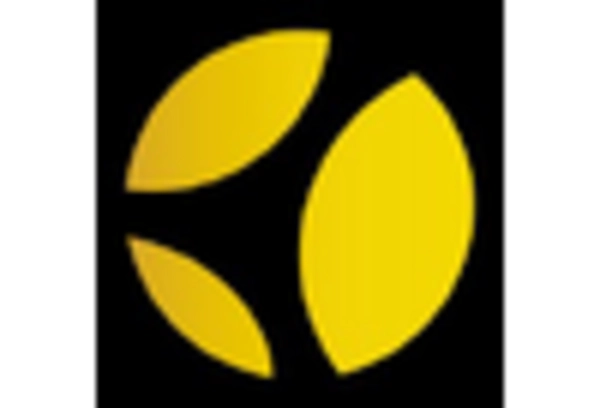Health Benefits Awareness
The increasing awareness of health benefits associated with low alcohol consumption appears to be a primary driver in the Low Alcohol Beer Market. Consumers are becoming more health-conscious, seeking alternatives that allow them to enjoy social experiences without the adverse effects of high alcohol intake. Research indicates that low alcohol beers often contain fewer calories and lower sugar levels compared to their traditional counterparts, making them appealing to those monitoring their dietary intake. This trend is particularly evident among younger demographics, who prioritize wellness and fitness. As a result, brands are responding by expanding their low alcohol offerings, which could potentially lead to a more competitive landscape within the Low Alcohol Beer Market.
Evolving Consumer Preferences
Evolving consumer preferences are shaping the landscape of the Low Alcohol Beer Market. As tastes and lifestyles change, there is a noticeable shift towards beverages that align with modern values, such as sustainability and ethical sourcing. Many consumers are now inclined to choose products that reflect their personal beliefs, which includes opting for low alcohol options that are perceived as healthier and more responsible. This shift is supported by market data indicating a steady increase in sales of low alcohol beers, suggesting that brands that adapt to these preferences may find greater success. Consequently, the Low Alcohol Beer Market is likely to see innovative product developments that cater to these changing consumer demands.
Rise of Craft Low Alcohol Beers
The rise of craft breweries producing low alcohol beers is contributing to the growth of the Low Alcohol Beer Market. Craft brewers are known for their creativity and willingness to experiment with flavors, which has led to a surge in unique low alcohol offerings. This trend not only attracts traditional beer enthusiasts but also appeals to a broader audience seeking novel taste experiences. Market data shows that craft low alcohol beers are gaining traction, with many consumers willing to pay a premium for quality and innovation. As craft breweries continue to expand their portfolios, the Low Alcohol Beer Market may experience increased competition and a wider variety of products available to consumers.
Increased Availability in Retail Channels
The increased availability of low alcohol beers across various retail channels is likely to drive growth in the Low Alcohol Beer Market. Supermarkets, convenience stores, and online platforms are increasingly stocking a diverse range of low alcohol options, making them more accessible to consumers. This trend is supported by data indicating that consumers are more likely to purchase low alcohol beers when they are readily available in their preferred shopping environments. Additionally, retailers are recognizing the demand for low alcohol products and are adjusting their inventory accordingly. As a result, the Low Alcohol Beer Market is poised for expansion, with enhanced distribution strategies playing a crucial role in meeting consumer needs.
Regulatory Support for Low Alcohol Beverages
Regulatory frameworks that support the production and sale of low alcohol beverages are likely to bolster the Low Alcohol Beer Market. Governments in various regions are recognizing the need for responsible drinking initiatives, which often include promoting low alcohol options. This regulatory support may manifest in reduced taxes for low alcohol products or marketing campaigns aimed at encouraging their consumption. Such measures could enhance the visibility of low alcohol beers, making them more accessible to consumers. Furthermore, as regulations evolve, the market may witness an influx of new entrants, thereby diversifying the product range available to consumers in the Low Alcohol Beer Market.


















Leave a Comment